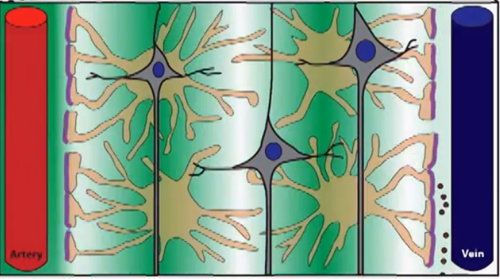Wednesday, 21 June 2023
Sophisticated cleaning systems in our brain

.
The human brain continuously consumes 20 to 25% of all the energy used by the human body and therefore inevitably produces large amounts of potentially toxic wastes, estimated to roughly equal the brain’s own weight over the course of a year. To eliminate all of this waste, the brain uses its own waste-clearance system, called the glymphatic system to indicate that it uses glial cells to perform the same function in the brain that the lymphatic system performs in the rest of the body. Previously, scientists had long thought that the brain cleansed itself by passive diffusion of cerebrospinal fluid from its ventricles. But that would be a very slow process for an organ as active as the brain.
The glymphatic system is far faster and far more effective. Every blood vessel in the brain is surrounded by a space called the perivascular channel, defined by the extensions of the astrocytes that completely surround the brain’s arteries, capillaries and veins. The cerebrospinal fluid enters the brain through the perivascular channels running along the arteries, and exits through those running along the veins. Not until the early 2010s were scientists able to use a method called 2-photon microscopy to visualize the flows of blood and cerebrospinal fluid in the brain in real time. Researchers thus learned that during sleep, the intercellular space in the brain increases by up to 60%, because the brain’s cells contract, thus expanding the perivascular channels and enabling cerebrospinal fluid to flow through them more freely.
For example, beta-amyloid protein, which is associated with Alzheimer’s, is removed from the brain two times more effectively when mice are asleep than when they are awake. The waste-laden cerebrospinal fluid is then carried away in part by lymphatic vessels located in the mater dura. Thus improvements in technologies for visualizing the brain are increasingly revealing the sophisticated cleansing systems that it contains.
From the Simple to the Complex | Comments Closed








